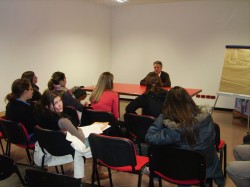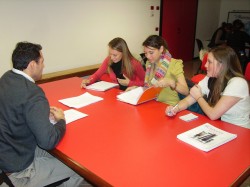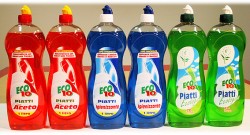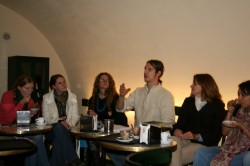 Although the fall break week provided plenty of time to travel throughout Europe and see the sights, Sarah Murphy and I wanted to spend our week off getting to know another area of Italy personally, practice our Italian, and spend as little euro as possible. After searching through several possible WWOOFing farms, deciding upon the hopefully still- moderately-weathered-Sicilia was easy. Our destination, Villa Del Bosco, roughly 2 km from the small town of Calatafimi, (in the region of Trapani) was in the middle of their olive harvest and in need of willing workers.
Although the fall break week provided plenty of time to travel throughout Europe and see the sights, Sarah Murphy and I wanted to spend our week off getting to know another area of Italy personally, practice our Italian, and spend as little euro as possible. After searching through several possible WWOOFing farms, deciding upon the hopefully still- moderately-weathered-Sicilia was easy. Our destination, Villa Del Bosco, roughly 2 km from the small town of Calatafimi, (in the region of Trapani) was in the middle of their olive harvest and in need of willing workers.
After 24 hours of continuous travel, we arrived, munched down a quick lunch and tramped out about one kilometer to the near by olive groves. Villa Del Bosco has over 1000 olive trees and while I’d love to say we got to all 1,000, we probably only did 799 (something like that) . Although it rained four out of the seven days, forcing us to stay inside and clean house, we harvested olives for about 18 hours total, yielding roughly 75 average sized bottles of the freshest, greenest most delicious olive oil known to man.

Due to a number of other farms around the area, we would wake up to surprises, such as newly pressed wine, abowl of fresh picked tomatoes or chicken eggs still with a few feathers on, on the table down stairs each morning. The Villa Del Bosco also doubles as an agriturismo and we cooked for an average of 8 people per meal! Thank goodness for the Sicilian cookbooks that were around the house, as well as native Sicilians who treated us to homemade snail soup one night. It was extremely relaxing, we would wake up around 9 each day, stroll out to the olive grove (if it wasn’t raining) work for about 3 hours, come inside, cook a huge Italian pranzo (noon meal), take a siesta until 3:30 then head back out to the grove and pick till 6-ish. Coming inside, we would take a quick snack, lounge by the fire and read or talk with the other workers until we started to make dinner around 8-ish.

We either retired early to bed, traveled a bit to relax in the hot springs, walk around the mountains in full moon light or bake apple turnovers and other sweet treats. We didn’t have to pay for any ingredients, food or our beds for 7 days and nights! It was certainly an interesting, rewarding experience filled with trials (dealing with Italians who did not exactly appreciate or understand American cooking, a lack of running water for a day or so), successes (picking over fifteen 25 kg buckets of olives in thick mud and the Sicilians being sad we wouldn’t be there to make chocolate chunk cookies again) and a week of stories that make us laugh (a characteristic 45 year old German woman misunderstanding our English, hearing string cheese as chicken cheese) and wish we could go back (sleeping in until 9 every day AND taking a nap for at least an hour a day). I would do it again in a heartbeat and wouldn’t have changed my week in Sicilia for all the road trips throughout Europe.
Post by Erica Mouch
Erica Mouch, the author of this blog, is a student from Elon University studying at The Umbra Institute this semester. She also writes for Cafeabroad.com
In order to satisfy the urge to drink hot chocolate in the mountains, Emily Strup, Elyse Akhbari and Hannah Fenlon decided to take a trip to Bolzano, Italy, home of the Dolomites, a German-Italian population (complete with strange accents) and Oetzi the 5,000 year old ice man. Without much of a plan in mind, the girls took off for Bolzano on a night train from Perugia, bringing along all of their jackets, scarves and gloves.
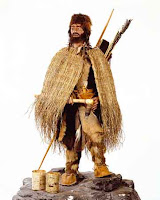 somewhat terrifying bus ride into the mountains for some breathtaking Heidi-esque views and a run in with the “Earth Pyramids”, some of the area’s natural wonders. Later that day, after many joyous rounds of “Climb Every Mountain,” the trio visited the South Tyrol Archaeology Museum to meet Oetzi the iceman, a mummy discovered in 1991 by hikers in the Bolzano area. Though Oetzi’s story was interesting, the man himself wasn’t too friendly, noted the group. Elyse was pleased, however, to find that she and Oetzi were the same height.
somewhat terrifying bus ride into the mountains for some breathtaking Heidi-esque views and a run in with the “Earth Pyramids”, some of the area’s natural wonders. Later that day, after many joyous rounds of “Climb Every Mountain,” the trio visited the South Tyrol Archaeology Museum to meet Oetzi the iceman, a mummy discovered in 1991 by hikers in the Bolzano area. Though Oetzi’s story was interesting, the man himself wasn’t too friendly, noted the group. Elyse was pleased, however, to find that she and Oetzi were the same height.

